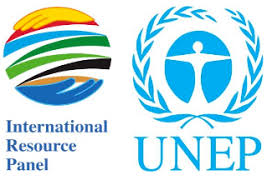2019 U.S. Community Protocol for Accounting and Reporting of Greenhouse Gas Emissions
This U.S. Community Protocol for Accounting and Reporting of Greenhouse Gas Emissions (US Community Protocol) is designed to inspire and guide U.S. local governments to account for and report on greenhouse gas (GHG) emissions associated with the communities they represent.
Soil Wealth: Investing in Regenerative Agriculture across Asset Classes
This report provides the first work product of a three-year project on innovative mechanisms for financing regenerative agriculture.
NRCS and Investment Capital: Investing in America Together
In 2016, USDA’s Natural Resources Conservation Service (NRCS) entered into an agreement with Encourage Capital to explore how NRCS might better use Farm Bill conservation funding to leverage private capital. This report is the culmination of many months of interviews, discussions and analyses that involved NRCS staff as well as external partners and stakeholders.
Single introductions of soil biota and plants generate long-term legacies in soil and plant community assembly
Recent demonstrations of the role of plant–soil biota interactions have challenged the conventional view that vegetation changes are mainly driven by changing abiotic conditions…Here, we demonstrate experimentally that one-time additions of soil biota and plant seeds alter soil-borne nematode and plant community composition in semi-natural grassland for 20 years. Over time, aboveground and below ground community composition became increasingly correlated, suggesting an increasing connectedness of soil biota and plants.
Soil Health Principles
This is Didi Pershouse’s expanded version of the USDA-NRCS Soil Health Division’s soil health principles.
Understanding Soil Health & Watershed Function: A Teacher's Manual
A joint project of The USDA Natural Resources Conservation Service, The USDA Southern Plains Climate Hub, The Soil Carbon Coalition, Redlands Community College, and The Dixon Water Foundation.
Land Potential.org
Land PKS is a free modular mobile phone app connected to cloud-based storage, global databases, and models. Land potential is defined as the inherent potential of the land to sustainably generate ecosystem services.
The International Resource Panel | UN Environment
The International Resource Panel was launched by UN Environment in 2007 to build and share the knowledge needed to improve our use of resources worldwide.
Regenerative Agriculture Podcast
On this show, John Kempf and his guests describe why most growers have crop challenges, and how to resolve them. You will find straightforward, actionable information about growing that can be implemented right away to increase crop quality, yields, pest resistance, and climate resilience; to regenerate soil health, and most importantly, increase farm profitability.
Regen.Ag Academy
These online courses detail how to develop and implement regenerative agriculture systems that promote plant and soil health and lead to long-term economic sustainability.
Can Dirt Save the Earth? (New York Times)
Agriculture could pull carbon out of the air and into the soil—but it would mean a whole new way of thinking about how to tend the land.
Advancing Soil Science and Research on Boulder City Open Space and Mountain Parks Land: Info Packet for City Council
Boulder natural areas represent a major existing carbon sink. Intact topsoil and standing vegetation contain millions of tons of sequestered carbon. Preventing land conversion and reducing the impacts of fires and floods are critical strategies for keeping this carbon and out of the atmosphere.












